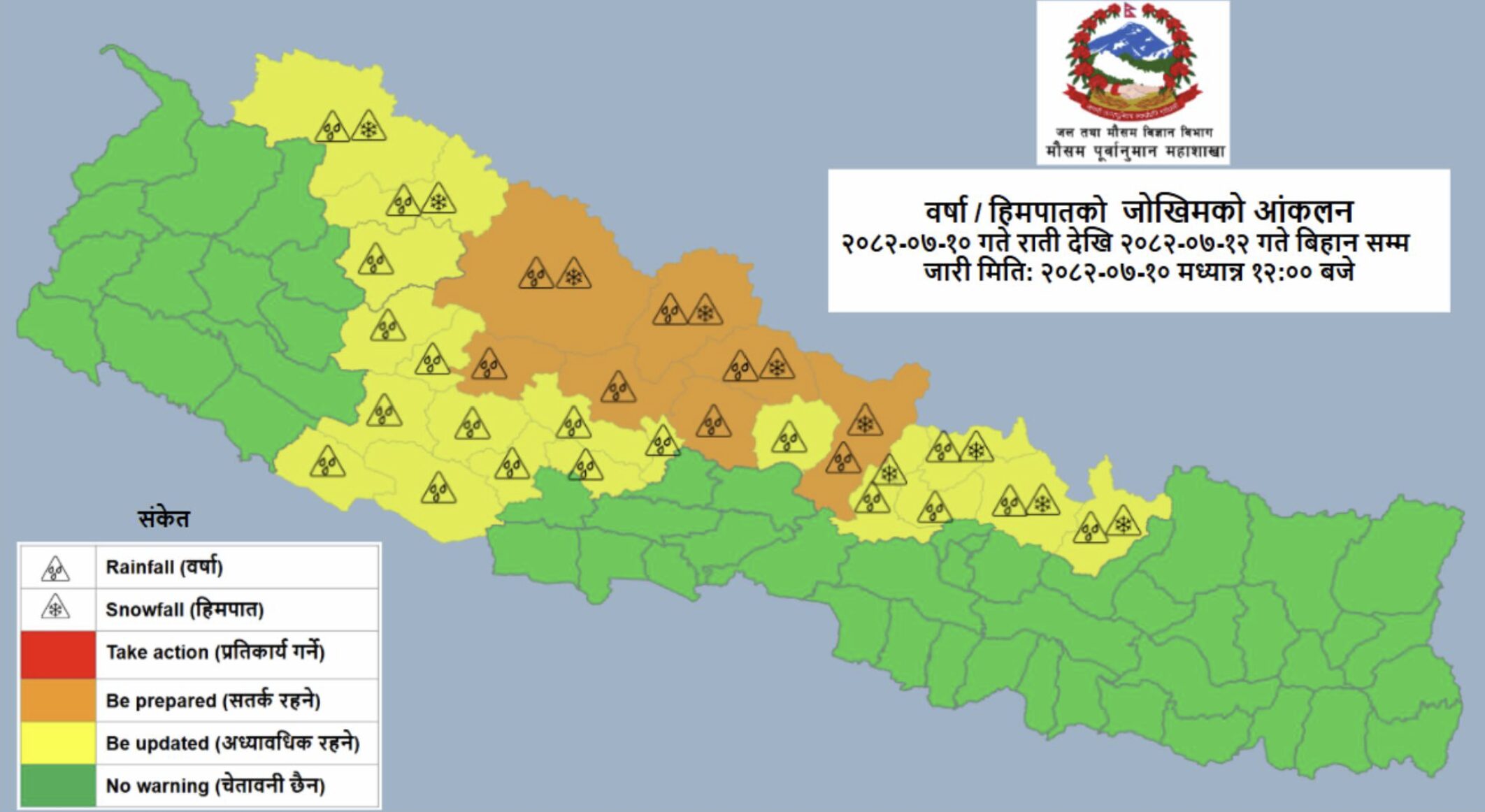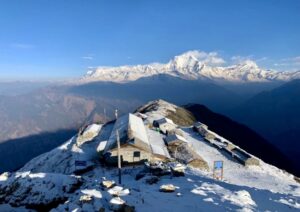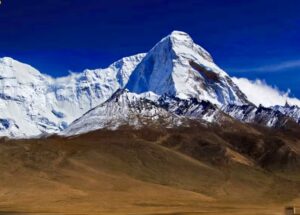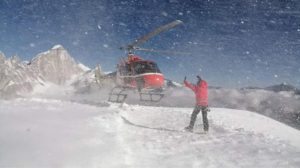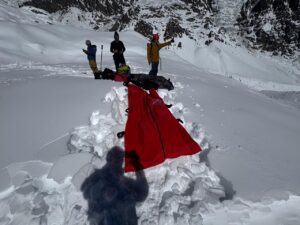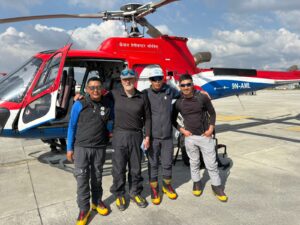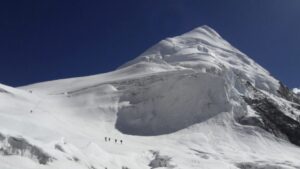A major storm is approaching Nepal’s Himalaya, and it is expected to worsen throughout this week. Most climbers are sheltering at lodges down the valley, but trekkers may be the most affected. Few are equipped for the big dump of snow expected shortly.
The Severe Cyclonic Storm, already known as Cyclone Montha, is approaching the east coast of India from the Bay of Bengal, Everest Today reported. It will affect the higher Himalayan regions of Nepal from Tuesday through Friday, with heavy snowfall and strong winds. It is expected to peak this Friday.
Nepal’s Department of Hydrology and Meteorology issued a warning bulletin today, translated into English by entrepreneur and travel consultant, Raj Gyawali:
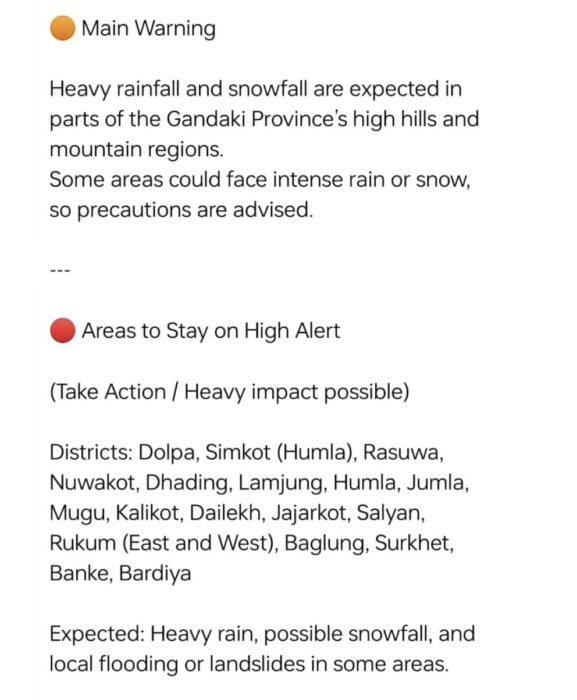
The weather warning issued today by Nepal’s Department of Hydrology and Meteorology. Credit: Raj Gyawali/Facebook
Annapurna alert
Roland Hunter of The Mountain Company has been tracking the storm to keep his trekking groups informed about the threat. Five days ago, it looked like the Kangchenjunga region would bear the worst of it. However, more recent charts suggest that the Annapurna region, further west, will suffer most.
“Tomorrow, the Annapurna [area] will get 22mm, with the heaviest rain expected on Friday with 68mm of rain (or snow, depending on the altitude),” Hunter noted.
He explained that trekkers doing the Annapurna Circuit should carefully consider whether they want to risk hiking up the Thorong La (5,416m), the high point of the trek, or even driving in the Kali Gandaki area, which is prone to flooding.
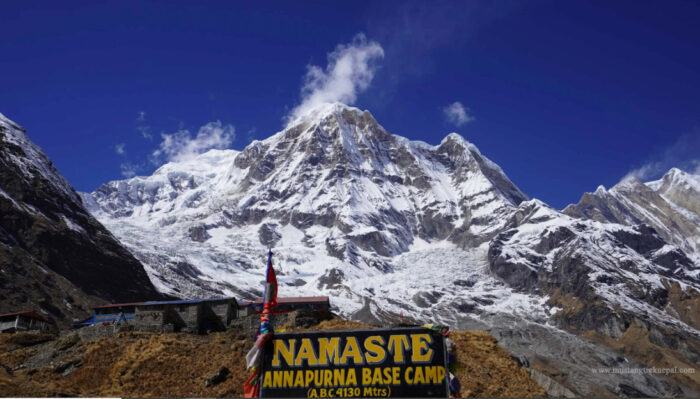
At Annapurna’s south side Base Camp, a popular trekking spot. Photo: Upper Mustang Trek
Trekkers less equipped
Climbing expeditions are prepared for rough weather and deep snow. However, the most popular treks in Nepal typically avoid venturing into ice and snow, as the trails remain off the glaciers. Trekkers do not carry loads of “just in case” gear with them, opting instead for versatile, lightweight clothing. They typically wear light hiking boots — some even insist on trail runners. Trekking equipment is based on a layering system that works in a wide range of temperatures. But dealing with half a meter of fresh snow on a 5,000m pass is a different story.
During a similar storm earlier this month, hundreds of hikers in Tibet were stranded and had to be helped down the valley. They were trekking in the Kangshung region near Everest, and made worldwide headlines when mainstream media assumed they were all stranded while actually climbing the mountain.
Climbers in the Khumbu shared some footage of that snow dump in the Khumbu. Below, a short clip from Lucien Bocansaud in Chukhung village:
Landslides and flooding
Snow and heavy rain have further side effects, including landslides, rockfall, and floods in the lower areas and avalanches higher up. Last spring, a trekker died in an avalanche near Annapurna Base Camp. The best way to tackle such difficulties is to be aware of the forecast and retreat to safer areas before the storm hits.
Unfortunately, even guided trekking groups rarely monitor weather forecasts. A recent, similar storm in Nepal killed a South Korean climber on Mera Peak and swept others to their deaths in flash floods. Mera Peak, one of the most popular trekking peaks in Nepal, is located in the heavily visited Khumbu Valley, which offers dozens of potential accommodations in case of rough weather.
A skeptical Holecek on Cho Oyu
Marek Holecek and Radoslav Groh of Czechia are not trekkers but rather alpinists about to attempt a new route on the Southeast Face of Cho Oyu.
“Various weather forecasts are coming in, [foreseeing everything] from a two-meter snowfall to a hurricane that will lift us and our tent and carry us somewhere to the Bay of Bengal,” scoffed Holecek.
He prefers to trust his own meteorologist, who spoke of unclear forecasts and suggested that they just wait it out. They have decided to do so at the base of the face, where they have cached a small tent and some gear, Holecek said.
If they go up and the storm evolves as expected, it will not be the first time that the Czech climbers have been trapped in a violent storm on a difficult mountain. On Baruntse in 2021, they barely survived a six-day tempest. In fact, Holecek has endured storms on virtually all his Himalayan expeditions.
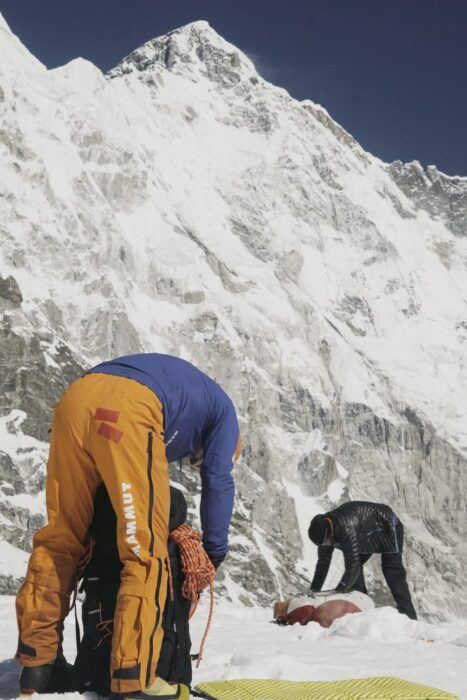
Holecek and Groh at their Advanced Base Camp at the foot of Cho Oyu’s South Face. Photo: Marek Holecek
